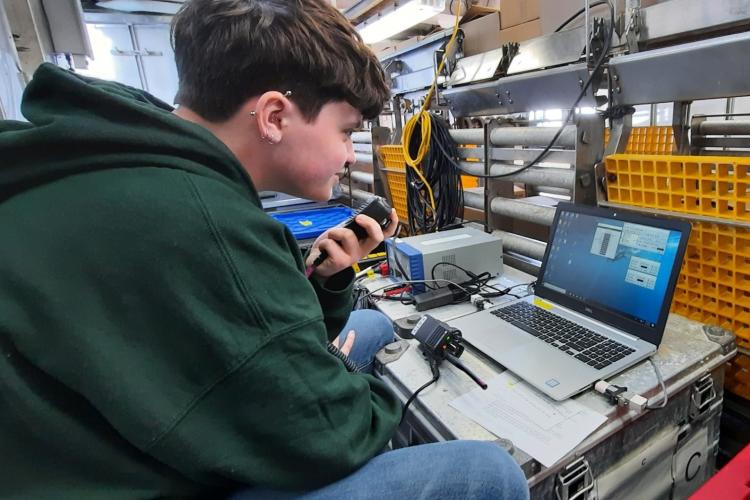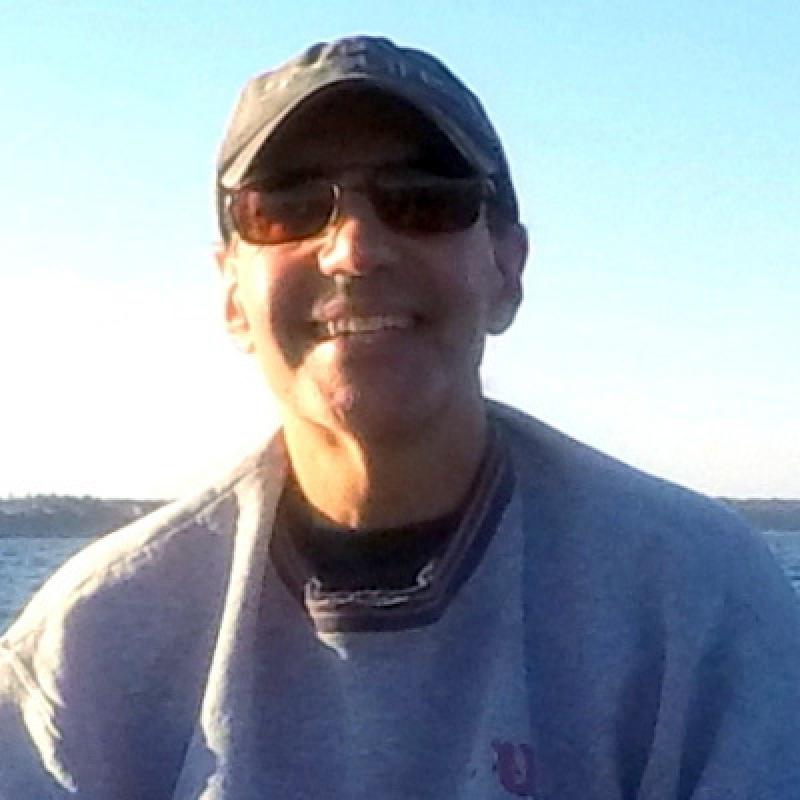Since our last update, the NOAA Ship Henry B. Bigelow has made excellent progress. We are now approaching our 63rd station, about 10 miles south of Long Island. We have completed 59 bongo tows and 14 Conductivity Temperature Depth rosette casts. We reached the southernmost point of the cruise off Cape Hatteras, North Carolina, on Saturday night (June 10) at 9 p.m., and since then have been working our way north along the inshore stations of the Mid-Atlantic Bight.
Diatoms, Pteropods, and Seabirds
Plankton catches have been very light, and the abundance of Calanus copepods that we saw previously disappeared as we went south. Norfolk Canyon seemed to be the dividing line where they dropped off. Imagery collected using our Imaging FlowCytoBot shows mostly small diatoms, with not many dinoflagellates appearing on the laptop screen. We have been getting amazing numbers of tiny pteropods (planktonic snails) in many of the samples. They are much too small to see with the naked eye, but readily apparent when a “swirl” technique is used to concentrate them in the center of the bottom of the glass sample jar. Our seabird and marine mammal observers have not seen the numbers of dolphins and whales that we had earlier in the trip on our way south, but there are now more birds than we had then. They have also spotted a few loggerhead sea turtles.
Smooth Sailing
The ship is performing well. With this excellent weather we are always able to transit quickly between stations, greatly helping our progress. People are all doing well too. Everyone is healthy and going through the myriad tasks that we have in our itinerary for this cruise. Even measuring light in the water column with the submersible radiometer, which was a last minute add-on to this cruise, is going more smoothly than I had anticipated. The ship’s command works with us during deployment of the radiometer. They nudge the ship slowly ahead so that the optical sensors don’t get shadowed by proximity to the ship’s hull as they are hand-lowered into the water.
At a Crossroads
Later today (June 14) we will be at a decision point as to which way we’ll be heading to carry out the northern part of this survey: Georges Bank first, or Gulf of Maine? I’ll meet with the vessel command, review the latest forecast, and see what our group comes up with. Stay tuned for our next update!
Jerry Prezioso, chief scientist for HB2302 Spring Ecosystem Monitoring Survey







